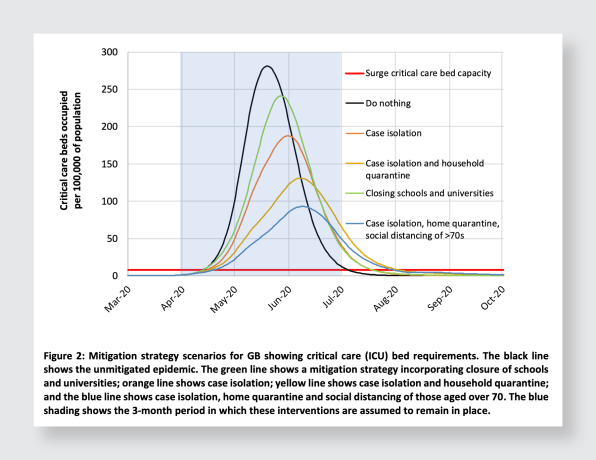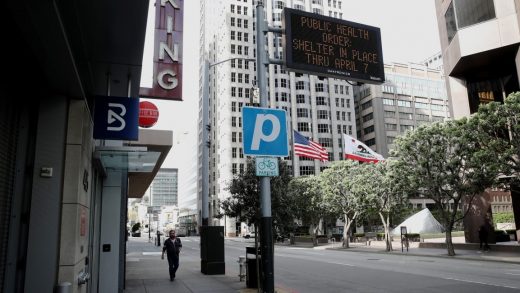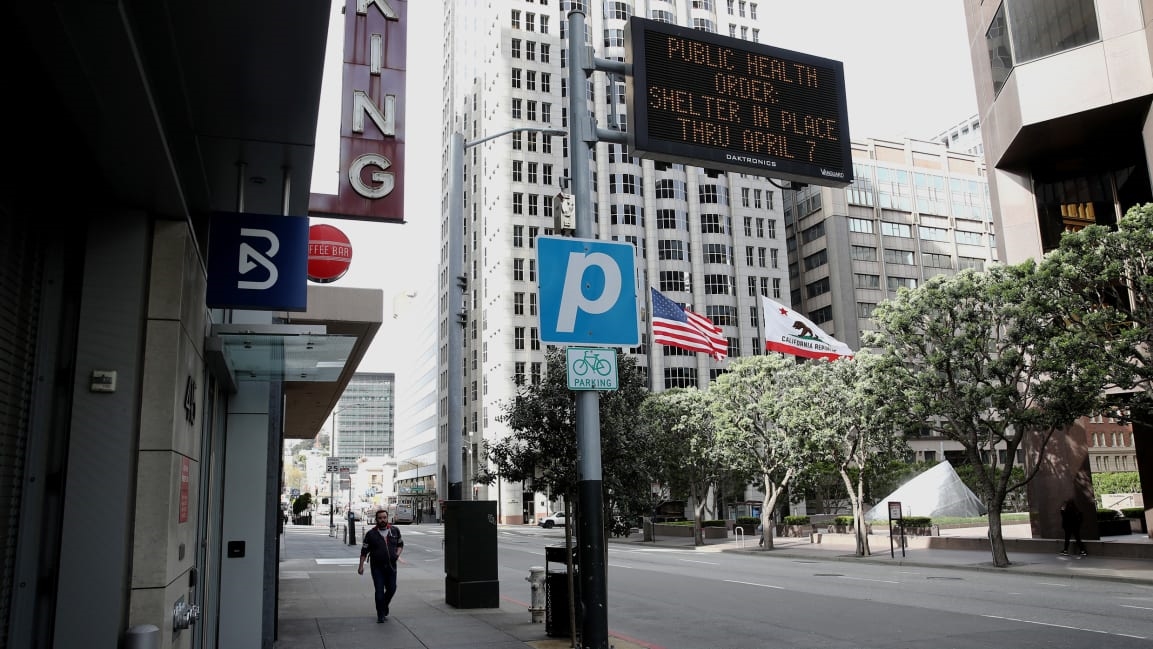A horrifying report says flattening the curve may not be enough—but there are reasons it might be wrong
As the coronavirus crisis grows, some cities are taking extreme steps to slow it down, including cities in the Bay Area, where residents now have to shelter in place for 21 days, venturing outside only for essentials such as buying groceries. But a new paper, not yet peer-reviewed, suggests that even that might not be enough to prevent later surges in cases that will overwhelm hospitals. Until a vaccine exists—perhaps as long as 18 months from now—the study says that life might have to radically change, with repeated periods of “social distancing” to stop the spread of the disease. But many others, including Bill Gates, argue that the new paper is too pessimistic.
Thirty epidemiologists from Imperial College London, who are advising governments in both the U.S. and the U.K., ran models to understand the impact that different interventions might have. Without any action, the result could be a startling 2.2 million deaths in the U.S. and half a million in the U.K.

In one strategy, which the researchers call mitigation, people suspected of having COVID-19 would be isolated at home, others potentially exposed to the virus would be quarantined, and the elderly and others most at risk of dying would limit social contacts. All of this could help reduce deaths by half and the burden on the healthcare system by two-thirds. But the researchers also found that it would still result in hundreds of thousands of deaths, and hospitals so overwhelmed by patients that they’re forced to make heartbreaking decisions about who is given the last remaining bed in an intensive care unit or access to a ventilator. (In Italy and China, doctors have already had to decide who gets access to treatment and who is denied life-saving support.)
The researchers suggest that much more extreme measures—which they call suppression—are necessary. Everyone would have to practice social distancing, not just those most at risk from the effects of the virus, partly because the virus is contagious even before someone who’s infected experiences any symptoms. Those with the virus would be isolated and their families quarantined. Schools and universities might have to close. And their model, if correct, suggests that doing this for a short period of time wouldn’t be enough; when the controls are lifted, infections may start to increase again. The researchers say that the interventions could be relaxed for short periods, but when more cases arise, we’d have to go back to more extreme measures. All of this might have to continue until a vaccine is tested and approved and enough people are vaccinated to control the virus.
But there’s also reason to think this report is overly pessimistic, and it’s not clear that the models it uses are correct. The virus is new, and the epidemiologists had limited data to work with. Even if a vaccine takes a year or 18 months to come to market, new drugs to treat the virus might potentially come faster. If cheap new at-home tests come to market, people might be able to do a better job of isolating themselves without the need for widespread social distancing. At least one group of scientists has suggested that a relatively short lockdown, combined with carefully finding and testing people who have been exposed to the virus, could be effective without needing to repeat extreme measures for as long as 18 months. Others have noted that the report doesn’t take into account potential advances in treatment or medical capacity.
And while the Imperial College team writes that it’s too early to know if China’s extreme actions were truly successful, Bill Gates says that there are examples of success around the world. Writing in a Reddit AMA on Wednesday, Gates, cofounder of the public health-focused Bill and Melinda Gates Foundation, and someone who has been warning about a pandemic for years, said:
Fortunately it appears the parameters used in that model were too negative. The experience in China is the most critical data we have. They did their “shut down” and were able to reduce the number of cases. They are testing widely so they see rebounds immediately and so far there have not been a lot. They avoided widespread infection. The Imperial model does not match this experience. Models are only as good as the assumptions put into them. People are working on models that match what we are seeing more closely and they will become a key tool. A group called Institute for Disease Modeling that I fund is one of the groups working with others on this.
There are obvious challenges with the current approach of long-term social distancing and isolation, especially for the millions of people who would be out of work if restaurants, retail stores, and many other businesses are forced to close not just temporarily but for extended periods. It’s also not clear how willing people would be to comply with the changes; even now, some people are resisting appeals to stop socializing to slow the spread of the virus. “No public health intervention with such disruptive effects on society has been previously attempted for such a long duration of time,” the researchers write. “How populations and societies will respond remains unclear.”
(23)



